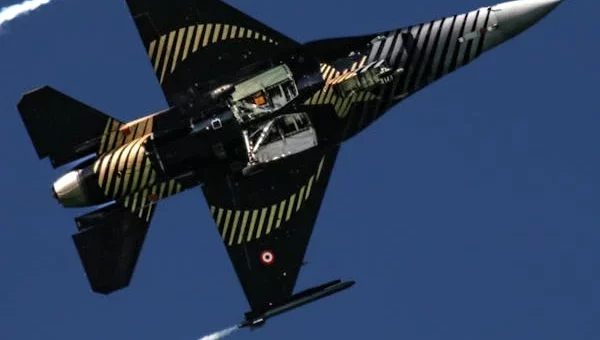
Introduction
Air-to-air missiles are essential weapons in modern fighter jets, defining their offensive and defensive capabilities in the sky. These guided missiles allow pilots to engage enemy aircraft at various ranges, combining sophisticated tracking, propulsion, and warhead technologies. This article explores the different types of air-to-air missiles fighter jets carry, how they function, and their impact on aerial combat.
1. Overview of Air-to-Air Missiles
1.1 Purpose and Importance
Air-to-air missiles (AAMs) serve as the primary weapon systems for fighter jets to neutralize airborne threats. Unlike guns or unguided rockets, AAMs provide precision targeting over long distances, increasing survival odds and mission effectiveness.
Pilots rely on AAMs to:
-
Engage enemy fighters beyond visual range (BVR)
-
Defend against incoming missiles or aircraft
-
Gain air superiority during dogfights
1.2 Historical Development
From early unguided rockets to today’s advanced guided missiles, air-to-air weaponry has evolved dramatically. Early models like the AIM-9 Sidewinder paved the way for sophisticated infrared and radar-guided missiles.
2. Types of Air-to-Air Missiles
2.1 Short-Range Missiles (Within Visual Range)
These missiles are designed for close combat scenarios, typically within 10-20 kilometers, relying on heat-seeking or infrared homing technology.
Popular Short-Range Missiles:
-
AIM-9 Sidewinder: A heat-seeking missile known for agility and reliability.
-
R-73 (AA-11 Archer): Russian counterpart with excellent maneuverability.
Key Features:
-
High agility for dogfighting
-
Infrared guidance tracking engine heat
-
Limited range but quick target acquisition
2.2 Medium and Long-Range Missiles (Beyond Visual Range)
These missiles engage targets at longer distances, often exceeding 50 kilometers, using radar guidance.
Popular Medium/Long-Range Missiles:
-
AIM-120 AMRAAM: A widely used active radar-guided missile capable of mid-course updates.
-
R-77 (AA-12 Adder): Russian missile with active radar homing and high speed.
Key Features:
-
Beyond visual range engagement
-
Active radar homing for target tracking
-
Ability to adjust trajectory during flight
3. Guidance and Targeting Technologies
3.1 Infrared (IR) Homing Missiles
IR-guided missiles detect the heat signature of an enemy aircraft, making them effective in close combat.
Advantages:
-
Passive guidance, hard to detect
-
Excellent against maneuvering targets
Limitations:
-
Vulnerable to flares and countermeasures
-
Limited range compared to radar-guided missiles
3.2 Radar-Guided Missiles
Radar-guided missiles use either semi-active or active radar homing to track and engage targets.
-
Semi-Active Radar Homing (SARH): Requires the launching aircraft to illuminate the target.
-
Active Radar Homing (ARH): The missile carries its own radar and can seek targets independently.
4. Missile Launch Systems and Integration
4.1 Internal and External Weapon Bays
Modern stealth fighters carry missiles internally to maintain low radar signatures. Older or multi-role jets use external pylons.
4.2 Fire-and-Forget vs. Fire-and-Update
-
Fire-and-Forget: Missiles like AIM-9 require no further input after launch.
-
Fire-and-Update: Missiles like AIM-120 receive mid-course guidance updates, increasing hit probability.
5. Future Trends in Air-to-Air Missiles
5.1 Hypersonic Missiles
Research is ongoing into hypersonic AAMs that travel faster than Mach 5, reducing enemy reaction time dramatically.
5.2 Enhanced Maneuverability and AI
Next-gen missiles use advanced seekers and artificial intelligence to predict evasive maneuvers and countermeasures.
5.3 Network-Centric Warfare
Integration of missiles into broader networked systems allows sharing of targeting data among multiple platforms, improving situational awareness and engagement success.
Tables and Examples
| Missile Name | Range (km) | Guidance Type | Role | Manufacturer |
|---|---|---|---|---|
| AIM-9 Sidewinder | 18 | Infrared | Short-range dogfight | Raytheon (USA) |
| AIM-120 AMRAAM | 105 | Active Radar | Beyond visual range | Raytheon (USA) |
| R-73 (AA-11 Archer) | 30 | Infrared | Short-range dogfight | Vympel (Russia) |
| R-77 (AA-12 Adder) | 80 | Active Radar | Beyond visual range | Vympel (Russia) |
Conclusion: The Future of Air Combat Depends on Air-to-Air Missiles
Air-to-air missiles remain the backbone of modern fighter jet combat capabilities. As technology advances, these weapons are becoming faster, smarter, and more lethal, ensuring that air superiority is maintained. Whether it’s close-range dogfights or beyond visual range engagements, understanding the missiles fighter jets carry is key to appreciating modern aerial warfare.
Which missile technology fascinates you most—the agility of short-range heat seekers or the precision of long-range radar-guided weapons? Share your thoughts and engage in the evolving conversation about aerial combat.